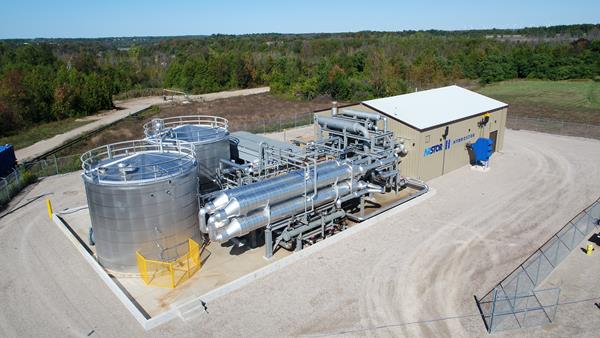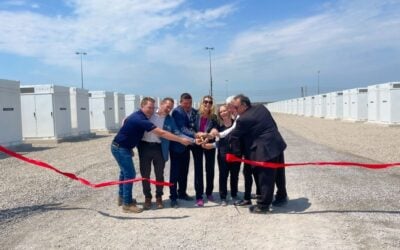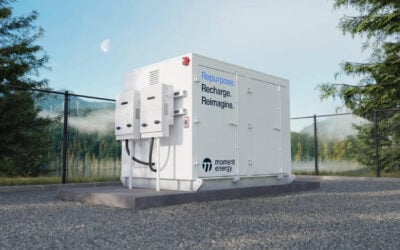
To stay in line with national net zero emissions policy objectives, Canada will need to install somewhere between 8GW and 12GW of energy storage by 2035, according to a new report.
Prepared for trade association Energy Storage Canada by consultancy Power Advisory, the white paper outlines the need for and potential to deploy energy storage in all seven of the country’s provinces.
Enjoy 12 months of exclusive analysis
- Regular insight and analysis of the industry’s biggest developments
- In-depth interviews with the industry’s leading figures
- Annual digital subscription to the PV Tech Power journal
- Discounts on Solar Media’s portfolio of events, in-person and virtual
Canada is targeting net zero emissions by 2050 from all sectors. However according to a government mandate issued in 2021, its electricity sector needs to be 90% non-emitting by 2030 and fully zero emission by 2035.
Power Advisory’s estimated need for storage would be the optimal level to put it on the right track, to achieve those goals, it said.
Ontario, where just a few days ago the government ordered electricity network operator Ontario IESO to administer the procurement of between 1,500MW and 2,500MW of energy storage to come online by 2027, has the largest potential to deploy energy storage at scale, the report found.
As noted in our coverage of that announcement, that’s largely to do with Ontario’s high demand for electricity, which is projected to grow about 1.7% year-on-year for the next two decades.
This is due to its growing population, government support for electrification of buildings and transport, and for attracting and fostering investments in EV and battery manufacturing, and low carbon steel production as well as other industries.
As Power Advisory pointed out in its report, ‘Energy Storage: A Key Pathway to Net Zero’, Ontario also has 10GW of natural gas generation that needs to be repurposed or replaced by 2035.
In a way, Ontario’s status is a proxy for what the entire country needs: new electricity supply resources to support growing demand in tandem with the replacement of existing carbon intensive generation.
The white paper makes reference to a report published in September by the Canadian Energy Regulator, called ‘Canada’s Energy Future’, in which multiple scenarios were modelled for attaining the 2050 target.
Even in a base case scenario, modelled only with regard for four-hour duration battery storage and not including distributed energy resources (DERs), the regulator found a need to deploy at least 1.7GW of storage each year to 2050, for a cumulative 52GW by the target date.
‘Versatility of storage will be essential’
Power Advisory and Energy Storage Canada emphasised the versatility of energy storage, meaning it has an important role to play in each of the provinces, but those systems could perform a range of different applications suited to the needs of each.
For instance, in some of the more rural regions of Canada, energy storage could be a cost-effective alternative to transmission network buildout – that’s something Energy-Storage.news has reported on around a couple of projects in the country.
In the more urbanised areas, with Ontario being the obvious example, using storage’s role to reduce peak demand for energy from the grid will likely be its standout application.
It is important to take into consideration that projections for the future can change and that need for storage may change, perhaps exceeding the 12GW mark by 2035. For instance, some forecasts at national and provincial level find an expectation for 15% to 20% growth in demand for electricity by 2035, while others predict a faster electrification and energy transition process, with a 30% to 40% growth in demand for electricity.
The good news there is that the white papers authors think there may be potential to exceed that upper limit of storage deployments by that time as well, to meet that need.
“Canada has set an ambitious goal to achieve a net zero electricity system by 2035, success of which depends on energy storage,” Energy Storage Canada executive director Justin Rangooni said.
“The versatility of energy storage is going to be absolutely essential to meeting the needs of more-end use electricity, an increasing volume of which will be generated by intermittent renewable and non-emitting resources.”
Energy Storage Canada and Power Advisory have worked together on a number of other reports in the past. A report published in June focused on how Ontario electricity rules and regulations should allow energy storage to be deployed as a non-wires alternative (NWA) to more costly investment in distribution network infrastructure.
Energy Storage Canada hosted the 7th edition of its annual conference this week.






